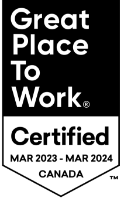
Article
COVID-19 Highlights the Importance of Governments Applying a Customer First Mindset to How They Serve Canadians
Level5 — January 19, 2022
COVID-19 is a monumental crisis and a shared challenge. And while pandemics cannot be stopped by any government on its own, the past two years have amplified the importance of having capable governments – and capability is often evaluated in terms of a government’s ability to keep its promises, particularly in these times of high urgency.
The Unique Challenge
Whether public or private, all organizations struggle to manage stakeholder needs. However, for the political and public sector, the wide base of stakeholders makes this much more difficult. Governments and public agencies are often required to meet various needs and priorities while managing tight budgets and with limited resources that are highly scrutinized.
What makes their work even more challenging, as we saw with the COVID-19 crisis, is that both priorities and data frequently change – all of which makes delivering on a vision for multiple stakeholders even more difficult. By focusing their efforts on what matters most to voters, patients, or taxpayers, public sector companies can use a customer-first mindset to transform the way they make decisions for society’s greater good.
Here’s why and how a Customer First Mindset (CX method) can help politicians and public organizations, as well as the institutions working to implement their mandates, cut through complexity and achieve greater success.
Identify the Priorities
A CX method is a valuable tool for identifying what matters most to your customers, however varied they may be. Once you understand your customers’ needs, you can align your organization’s activities with them and then determine where to improve. The best part is that this is a true win-win methodology: customers have their needs met leading to higher levels of satisfaction, and agencies have the tiebreaker they need when striving to deliver value in a complex multi-stakeholder environment.
Part of the challenge the public sector has is that government entities have to satisfy disparate stakeholders (both internal and external) as well as competing priorities, timelines and limited resources. To cut through the cascade of priorities that must be met, start with the public promise or ask. By putting the end user at the center of all decision making, governments and public organizations can cut through the noise and instead, focus on prioritizing what the end user believes is the most important.
Demonstrate Impact from the Initiative
In a publicly operated organization, the complexity of the stakeholder environment is connected to the breadth of responsibility within it. Public organizations are typically expected to generate value for everyone in their jurisdiction. However, this means it is often difficult to demonstrate that a meaningful impact has been achieved.
Solutions are rarely a ‘silver bullet’ that meet every stakeholder group’s divergent wants and needs, and are therefore often ignored or unrecognized by select stakeholders. As a consequence, the progress made and the impact realized along the way can be diluted or overlooked. The CX method helps public organizations better track performance metrics and user feedback in order to paint a clear picture of how they are progressing against what matters most. This enables improved time prioritization and resource allocation.
The Data on the CX Method & Public Organizations
The Data supports that a CX strategy can help public sector organizations satisfy their stakeholders and leads to positive outcomes for public sector companies:
- Satisfied customers are 9 times more likely to agree that an agency is delivering on its mission
- Dissatisfied customers are 2 times more likely to express their dissatisfaction
- Satisfied customers are 5 times more likely to agree that public service is a good investment of taxpayer money
- Satisfied customers are 9 times more likely to trust the agency
Source: D’Emidio, Tony, et al. The Global Case for Customer Experience in Government. McKinsey & Company, Sept. 2019
As with businesses and enterprise organizations, a CX method is a valuable tool that government at all levels, as well as their adjacent public partners, can use to identify what matters most to their stakeholders, however varied they may be. This win-win methodology can help lead to higher levels of satisfaction across groups and provide agencies with the internal tiebreaker they need when striving to deliver value in a complex multi-stakeholder environment.
Reach out to Michael Carter at mcarter@level5strategy.com to find out more about Level5’s customer experience practice.


